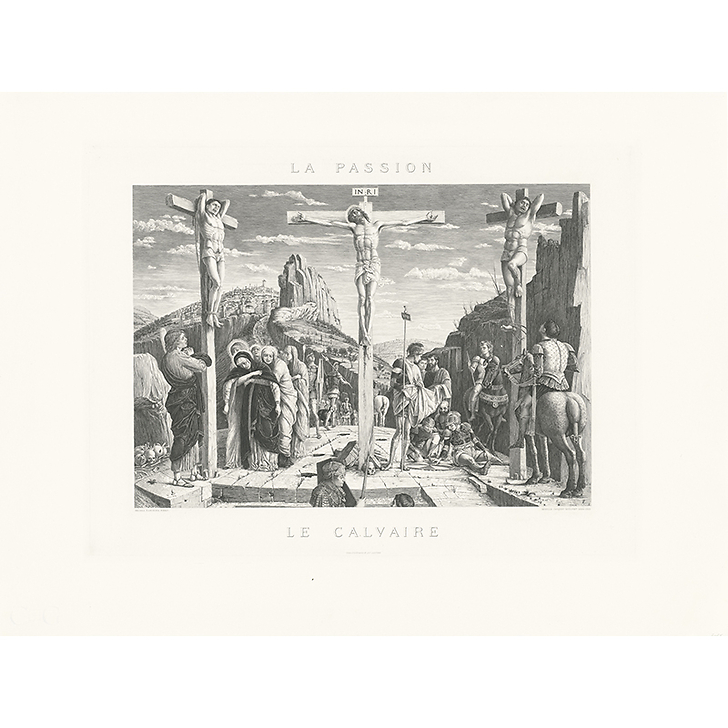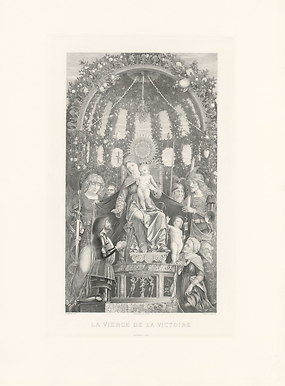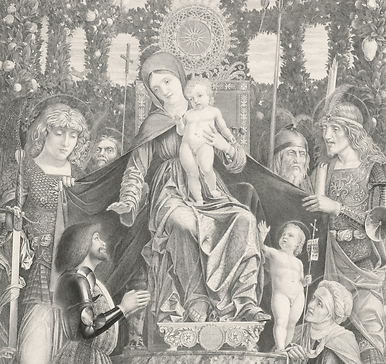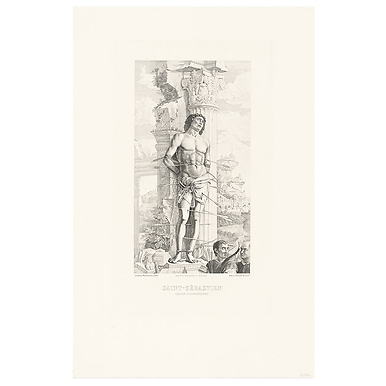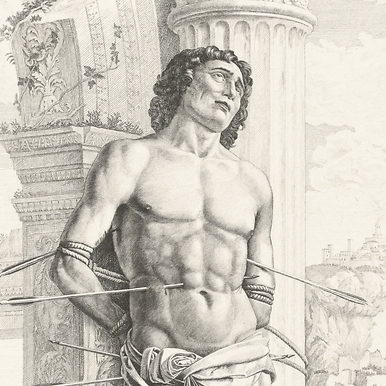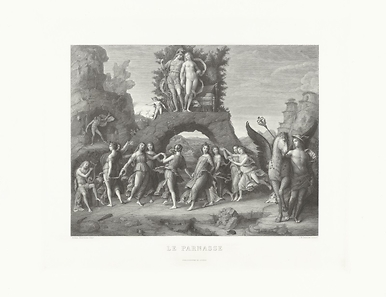Engraving Christ on Calvary - Andrea Mantegna
KM006065
Plate engraved at the end of the 19th century by A. Jacquet (1846-1908) after a 15th century painting by A. Mantegna
Etching and chisel on copper, H. 56 L. 76 cm
Print from the original plate belonging to the Collection de la Chalcographie du Louvre, inv. 6065
Before the invention of photography and...
Read more
Plate engraved at the end of the 19th century by A. Jacquet (1846-1908) after a 15th century painting by A. Mantegna
Etching and chisel on copper, H. 56 L. 76 cm
Print from the original plate belonging to the Collection de la Chalcographie du Louvre, inv. 6065
Before the invention of photography and good-quality printing processes, the so-called "interpretive print" was the only means of disseminating the masterpieces of the Louvre Museum to a wide audience.
Print made for the exhibition of the Louvre, Albrecht Altdorfer. Master of the German Renaissance.
Engraved by Achille Jacquet after the painter André Mantegna, this plate of the Crucifixion is part of a triptych. The 3 plates were printed on one and the same sheet of Japan for the Universal Exhibition of 1900. Printed in 200 copies, this composition is considered as the "nail of the National Chalcographie". The State ordered several copies on satin, to make gifts to important personalities in 1903-04: the Queen of Greece, Mr. Credler, American Commissioner General of the World's Fair in St. Louis for example.
These 3 compositions belong to a more important work, the altarpiece of San Zeno and compose the predella of the latter. Following revolutionary seizures, the original paintings are today kept in the Louvre. Indeed, the six pieces of the altarpiece were requisitioned and dismembered in May 1797 during Bonaparte's Italian campaign.
Recognized as a major artist, this work reflects all the qualities of the artist: the masterful use of perspective, references to ancient culture and the strong expressiveness of the figures. These constants visible in this early work remain present in his work and are the basis of the modernity of his style. The painter offers a tragic vision of the ordeal of the crucifixion in Golgotha. A pupil of Squarcione and the sculptor Donatello, the artist learned how to render volumes, bodies, in a sculptural, even mineral way. From the same masters, he received a taste for the work of perspective, a constant found throughout his work. He also likes the rendering of landscapes where sinuous paths are lost towards mysterious cities.
Close
Login to see prices
Sold by GrandPalaisRmn

